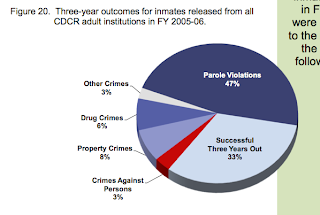
(Image courtesy AP and the Sac Bee)
This is a crime children grow up hearing about,” said parole commissioner Susan Melanson. She said they had received 80 letters from around the world advocating Krenwinkel’s continued incarceration. “These crimes remain relevant.”
Krenwinkel, now gray haired and grandmotherly looking at 63, wept and apologized.
“I’m just haunted each and every day by the unending suffering of the victims, the enormity and degree of suffering I’ve caused,” Krenwinkel said.
She was soft spoken and contrite in response to board members’ questions, describing the downward spiral of her life after she met Manson and came under his spell.
“He sang to me and made love to me,” she said. “…I left everything and went with him. He seemed like the answer to my salvation.”.
Because of him, she said, “Everything that was good and decent in me I threw away.”
It was her late father, she said, who helped her realize during his visits to her in prison, “what had happened, and the monster I became.”
And here’s the response from the prosecutor and victims:
“If Patricia Krenwinkel has remorse, I don’t see how she could walk into this room,” said a tearful Anthony Di Maria, the nephew of Jay Sebring, who was killed along with Tate. “No punishment could atone for the cold-blooded murders in this case.”
Los Angeles Deputy District Attorney Patrick Sequeira also suggested that if Krenwinkel was remorseful she would waive her parole hearings and accept her punishment.
These are interesting comments. They suggest that, for someone convicted of a truly heinous crime, there is no way to show remorse except not showing it and accepting one’s punishment. That is, that showing remorse and seeking release from imprisonment are incompatible. Setting aside the particulars in Krenwinkels’ case, this premise seems to evoke the religious undertones of the original penitentiary – seeing the prison as an institution for understanding the full meaning of one’s bad deeds and redeeming one’s soul through serving one’s time. These goals shaped the American prison from its early days; the isolation method at Eastern State Penitentiary (which we visited in late 2009), with no one to talk to except for the pastor and nothing to read but the Bible, were designed by Quaker reformer with those exact aims in mind.







